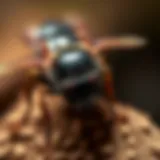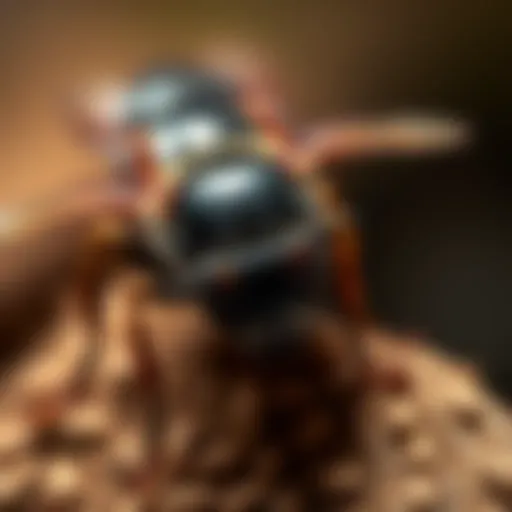Exploring the Insectarium: A Deep Dive into Insects


Intro
Insectariums serve as vital spaces for education, research, and conservation, bringing the intricate world of insects closer to the public. These facilities exhibit a range of species, from butterflies to beetles, each playing crucial roles in their ecosystems. By understanding these creatures, we gain insight into their significance not only in nature but also in pest control and biodiversity.
Visitors to insectariums often find themselves amazed by the diversity of life that these small organisms represent. Through detailed displays and interactive exhibits, these institutions effectively raise awareness about the misconceptions surrounding insects. Some perceive insects solely as pests, overlooking their ecological contributions.
An insectarium bridges the gap between understanding bugs as mere annoyances and recognizing their essential roles in our environment. Their presence reinforces the need for maintaining biodiversity. By learning more about these creatures, we can better appreciate how every species fits into the larger context of life on Earth.
Understanding the Insectarium
Understanding the insectarium is essential for appreciating the role these facilities play in education, conservation, and research. An insectarium is more than just a display area for insects; it serves as a living museum and a crucial tool for understanding the complexities of the insect world. Through engaging exhibits and interactive experiences, these institutions foster a deeper knowledge of insects and their ecological significance.
Definition and Purpose
An insectarium is defined as a facility dedicated to the study and exhibition of insects. The primary purpose is to educate the public about the vast diversity of insect species and their important roles in ecosystems. It provides a space where enthusiasts, researchers, and families can learn about insects in an organized environment.
Insectariums often include live insect displays, educational programs, and research initiatives. They aim to spark curiosity about entomology—the study of insects—and promote awareness of environmental issues related to insects. Visitors can explore habitats specific to various species, witnessing the intricate relationships insects have with their surroundings. By doing so, insectariums bridge the gap between academic research and public knowledge, promoting informed discussions about biodiversity and conservation.
Historical Development
The concept of an insectarium emerged in the late 19th and early 20th centuries as part of a broader interest in natural history. Early insectariums focused primarily on the collection and display of species, much like traditional museums. However, as the understanding of ecological relationships advanced, so too did the goals of these institutions.
Insects have been recognized for their ecological significance for centuries, but organized efforts to educate the public began in earnest with advancements in taxonomic studies. Over time, institutions began emphasizing conservation efforts and the importance of insects in supporting biodiversity. As such, many insectariums today combine elements of research, conservation, and education, contributing to a more comprehensive appreciation of these invaluable organisms.
Through the ongoing evolution of their role, insectariums have become pivotal in promoting insect conservation and understanding the myriad functions these creatures perform within ecosystems. They serve as sites of inspiration for future research and play a critical part in reshaping public perceptions of insects.
Architecture and Design of Insectariums
The architectural framework of insectariums goes beyond mere aesthetics; it creates an environment conducive to the study and appreciation of insects. Thoughtful design can enhance visitor experiences and foster educational opportunities. The goal is to replicate natural habitats as closely as possible, allowing both insects and their ecosystems to thrive under controlled conditions.
Spatial Layout Considerations
When planning the spatial layout of an insectarium, several factors come into play. First, the flow of visitor traffic needs to be considered. This flow allows for an immersive experience, encouraging guests to engage deeply with the exhibits. Pathways should be intuitive, leading visitors through various zones highlighting distinct habitats and insect species.
Key elements of spatial layout include:
- Zoning: Dedicated areas for different geographical regions or types of insects make it easier for visitors to understand biodiversity.
- Viewing Platforms: Raised platforms or glass tunnels enhance visibility, making the tiny inhabitants more accessible to all ages.
- Accessibility: Accessibility features ensure that all visitors, regardless of mobility, can enjoy the exhibits fully.
- Interactive Stations: Interactive displays should be strategically positioned to allow engagement without disrupting the flow of movement.
Habitat Simulation
Habitat simulation is a crucial aspect of insectarium design. This process involves creating environments that accurately reflect the natural habitats of the insects on display.
Considerations for effective habitat simulation involve:
- Climate Control: Insects require specific temperature and humidity levels. An effective insectarium integrates climate control systems to maintain these conditions consistently.
- Plant Life: Incorporating live plants into exhibits not only beautifies the space but also provides shelter and food for various insect species. This adds to the realism of the habitat being simulated.
- Natural Light: Using natural light where possible can positively influence the behavior of insects. Well-placed windows or skylights can help simulate day and night cycles, aligning with the biological rhythms of the insects.
Diversity of Insect Species
Understanding the diversity of insect species is crucial in recognizing the myriad roles insects play in our ecosystem. Insectariums serve as critical hubs for showcasing this variety. They constitute living laboratories allowing visitors to observe and appreciate the complexity of insect life. The sheer number of insect species, estimated to be over ten million, indicates a well-defined structure in our planet's ecosystem. Each species contributes unique benefits, from nutrient recycling to serving as pollinators.
This diversity is not just about the number of species but also their various adaptations. For example, the ants show complex social behaviors, while butterflies exhibit stunning variations in color. Education about these species' roles can lead to better understanding and appreciation among the public.
In addition to educational purposes, insect diversity in insectariums aids in conservation efforts. It raises awareness about the threats many species face, and their importance to environmental health. Through exhibits, visitors learn about insect behaviors, their habitats, and survival strategies. This knowledge can influence conservation actions in wider contexts, enhancing our connection to the natural world.
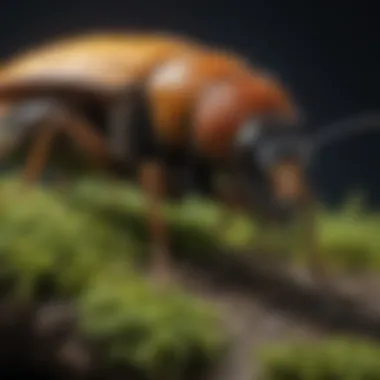
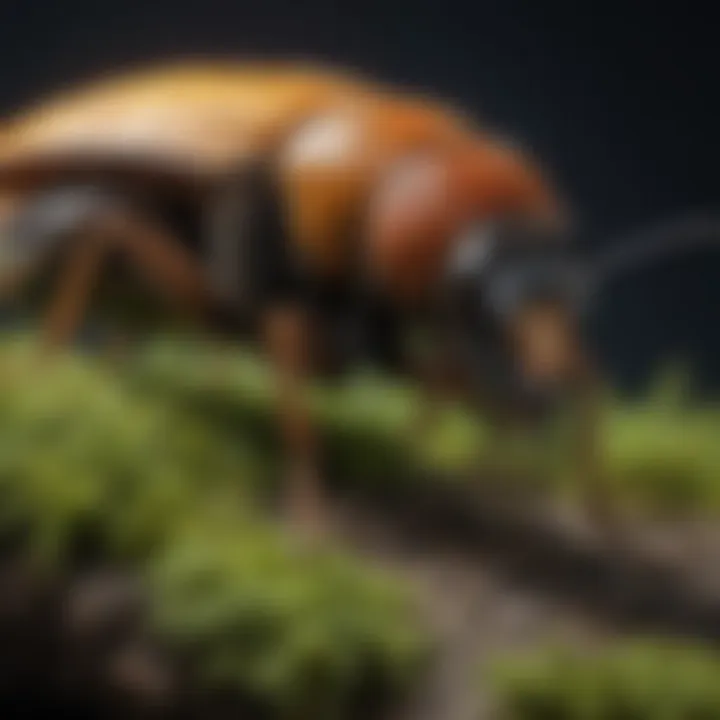
Commonly Exhibited Species
Commonly exhibited species in insectariums include beetles, butterflies, and honey bees. Each of these insects has been chosen for their robust characteristics and educational value. For instance, the Monarch butterfly is frequently displayed as it is a symbol of migration and resilience. Its life cycle captivates audiences, encouraging discussions about metamorphosis and adaptation.
Another commonly featured species is the American cockroach. While often seen as a pest, it provides insights into urban ecology and the adaptation of insects to human environments. Beetles, particularly the rhinoceros beetle, attract attention due to their size and strength. They are often showcased to impart lessons on biodiversity and evolutionary adaptations.
These species not only engage visitors but also serve as a gateway to deeper ecological awareness, showing how common insects play significant roles in their environments. Understanding these species helps demystify their existence and contributes to broader conservation messages.
Rare and Endangered Species
Rare and endangered species occupy a special place in insectariums. These insects are crucial for educational purposes, helping to communicate the urgent need for conservation. A notable example is the Xerces blue butterfly. Once native to California, this species was declared extinct, highlighting the fragility of insect populations.
Insectariums feature rare species to instill a sense of responsibility among visitors. By learning about species like the Staghorn beetle or the golden toad beetle, audiences can grasp the implications of habitat loss and climate change. The showcasing of such species prompts visitors to reflect on their role in preventing further decline.
In addition, insectariums often collaborate with conservation organizations to rescue these species. They may engage in breeding programs and habitat restoration that sustain these insects outside their natural environments. This hands-on approach provides a more profound understanding of the challenges facing many insect species and emphasizes the importance of biodiversity.
"Understanding the diversity of insects is critical to maintaining ecological balance and promoting sustainable practices in our environments. "
Overall, recognizing the diversity of insect species enriches our understanding of ecology and encourages a more profound commitment to conservation.
Educational Role of Insectariums
The educational role of insectariums is pivotal in driving public interest towards entomology and environmental conservation. These institutions serve as knowledge hubs, fostering a deeper understanding of insects and their ecological importance. The intent is not only to educate visitors about different species but also to cultivate an appreciation for these often-overlooked creatures. Insectariums can inform the public about biodiversity and highlight the vital services insects provide for ecosystems.
Promoting Inquiry-Based Learning
Inquiry-based learning is an educational approach that emphasizes the learner's role in the learning process. Insectariums foster this method by encouraging visitors, especially children, to ask questions, investigate, and reflect on their observations. Interactive exhibits often prompt visitors to formulate hypotheses about insect behavior and habitats. Such exploration can lead to deeper discussions about ecology and conservation.
Through guided tours and workshops, instructors can provide insights into insects’ roles within food chains, pollination, and waste decomposition. This engagement empowers learners to actively participate in discovering the connections among insect life, environmental health, and human activity. By prompting questions like "How do insects contribute to our agriculture?" or "What happens when a species goes extinct?", insectariums stimulate critical thinking.
Hands-On Experiences for Visitors
Hands-on experiences are essential components of education in insectariums. They transform passive observation into active participation. For example, many insectariums offer opportunities to observe live insects closely within controlled environments. This includes touch tanks or feeding demonstrations that allow visitors to safely interact with specific species. Such encounters provide an intimate understanding of insect behavior, lifecycles, and habitats.
Moreover, workshops on insect habitats, their role in ecosystems, and practical conservation strategies form an engaging method of learning. These workshops often include simple activities like building insect hotels or creating gardens that attract beneficial insects. With these activities, visitors learn the significance of insects not only from an aesthetic viewpoint but also as essential components of environmental systems.
Insectariums essentially become bridges bridging the gap between scientific knowledge and public interest. They allow people to discover the complexity of insect life firsthand.
Research Contributions of Insectariums
Research in insectariums offers invaluable insights into various aspects of entomology and ecology. These institutions serve not only as exhibition spaces but also as vital research centers that contribute significantly to the understanding of insects and their roles in our ecosystems. Insectariums provide a controlled environment where scientists can observe insect behavior, study interaction among species, and explore breeding processes. Such research is essential for developing strategies that address ecological challenges.
Studying Insect Behavior
Insect behavior is a key focus area in insectarium research. By observing insects in their habitat, scientists can gather data on how they communicate, feed, and reproduce. This observation is highly beneficial since it allows researchers to study processes that might be challenging to replicate outside a controlled setting. For example, understanding mating rituals can help scientists in conservation efforts aimed at preserving endangered species.
Impactful studies often involve manipulating environmental variables in these habitats. Changes in temperature, humidity, and light can reveal how insects adapt their behaviors. These studies not only further scientific knowledge but also inform practical applications in agriculture and pest management.
Contributions to Entomology
Insectariums play a critical role in advancing the field of entomology. They house diverse insect species, allowing researchers to document and classify new varieties. This information can lead to a better understanding of biodiversity and ecosystem health. Moreover, the data gathered contributes to larger databases crucial for identifying trends in insect populations and their ecological importance.
The findings from insectariums often aid in addressing broader issues like climate change and habitat loss. Understanding how insect populations respond to environmental stressors is essential for predicting changes in ecosystems. This information can help policymakers and conservationists make informed decisions.
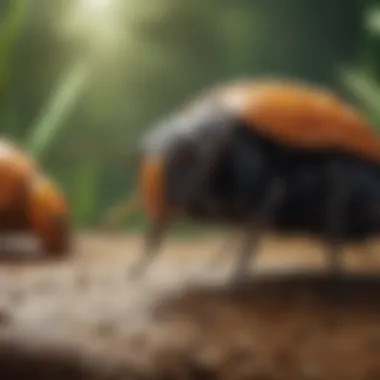
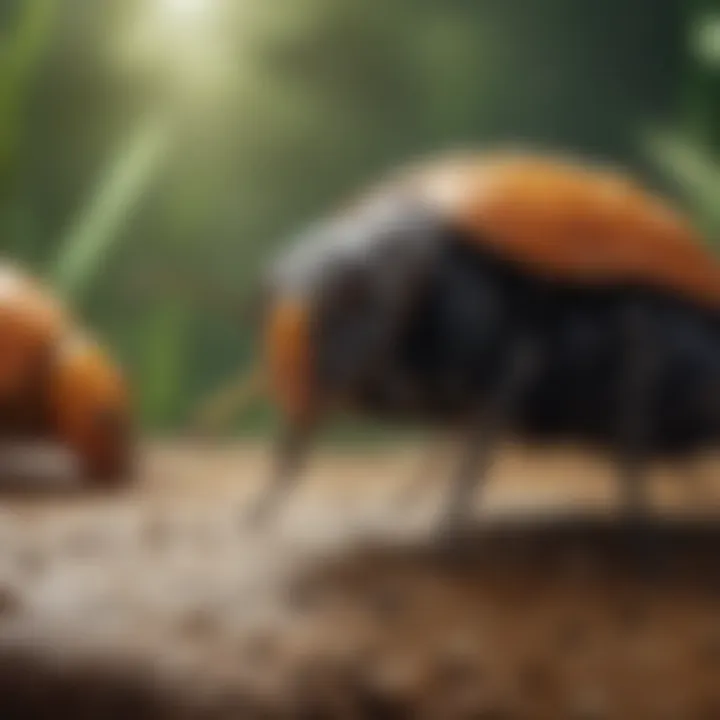
"Research conducted in insectariums is critical for understanding the complexities of ecosystems and making informed decisions for conservation efforts."
Conservation Efforts Initiated by Insectariums
Conservation efforts in insectariums are crucial for preserving biodiversity. These facilities play a significant role in both in-situ and ex-situ conservation strategies. By supporting the safeguarding of insects and their habitats, insectariums contribute to the broader goals of environmental sustainability and ecological health. Their impact extends beyond the walls of their exhibits, fostering public awareness and understanding of insect-related issues.
In-Situ and Ex-Situ Conservation
In-situ conservation focuses on protecting species in their natural habitats. Insectariums often collaborate with environmental organizations to restore ecosystems where threatened insect species reside. This method emphasizes the importance of maintaining existing habitats, which is essential for the survival of various insect populations.
Conversely, ex-situ conservation involves the maintenance of species away from their natural environment. Insects can be raised in controlled conditions within insectariums. This allows for research and breeding programs aimed at preventing extinction. For example, the Phoenix Zoo in Arizona has successfully bred and released the endangered Miami blue butterfly through strict ex-situ measures. Such actions underline the vital need for insectariums to participate in both conservation types, benefiting the insects themselves and contributing to global conservation efforts.
Community Engagement
Engaging the community is fundamental to the success of conservation initiatives in insectariums. Education programs play a key role in raising awareness about the importance of insects in ecosystems. By informing the public about the benefits of insects, such as pollination and decomposition, insectariums encourage a culture of conservation.
Furthermore, volunteer opportunities and citizen science projects allow community members to contribute directly to conservation efforts. For example, some insectariums invite local residents to help with habitat restoration or monitoring insect populations in their areas. This collaboration strengthens community ties while promoting an understanding of the challenges insects face in the wild.
"Involvement of the local community is pivotal in fostering a resilient ecosystem. When people feel connected to the conservation process, they are more likely to advocate for sustainability."
Overall, conservation efforts initiated by insectariums are significant not just for the insects themselves, but also for fostering community involvement and promoting broader environmental stewardship.
Insect Ecology and Its Importance
Insect ecology is a vital area of study that underlines the significance of insects within various environmental contexts. Understanding the interactions between insects and their ecosystems helps to appreciate their role in sustaining life on Earth. Insect ecology encompasses various activities, such as foraging, reproduction, and habitat selection, which are essential not only for the insect populations but also for many other organisms, including plants and animals.
The sheer abundance and diversity of insect species provide numerous benefits. Insects are often referred to as the backbone of many ecosystems. They contribute to crucial ecosystem services that maintain environmental balance and support human lifestyles.
Insects and Ecosystem Services
Insects perform several key ecosystem services that are fundamental for food production and ecological harmony. These services include:
- Pollination: Many insects, especially bees and butterflies, are central to the process of pollinating flowering plants. This action is vital for the reproduction of over 80% of flowering plants, including crops that feed humans.
- Decomposition: Insects like beetles and ants break down organic matter, aiding in decomposition and nutrient cycling. This process enriches the soil and promotes plant growth.
- Soil Aeration: Insects such as earthworms and certain beetles help aerate the soil. This enhances water infiltration and root penetration, benefiting plant health.
- Food Source: Insects serve as a crucial food source for numerous animals, including birds, fish, and small mammals. The health of higher trophic levels often depends on healthy insect populations.
Understanding these services highlights the need to conserve insect populations, as a decline in their numbers can disrupt these critical functions and ultimately affect human health and food security.
Pollination and Biodiversity
Pollination is an essential ecological service that ensures genetic diversity and survival of plant species. Insects play a major role in this process, particularly bees, butterflies, and other pollinators. A significant portion of the food crops we consume, including fruits, vegetables, and nuts, rely on insect pollination.
The relationship between insects and biodiversity extends beyond just food production. Biodiversity leads to resilient ecosystems that can adapt to changes. When insect populations thrive, they support more diverse plant communities. This, in turn, creates habitats for other organisms, fostering a richer biodiversity.
However, human activities have led to declines in both insect populations and biodiversity. Factors such as habitat destruction, pesticide use, and climate change pose threats. Understanding these challenges can lead to better conservation strategies to protect the delicate balance of ecosystems where insects play a crucial part.
"The astounding variety of insects and their ecological functions show just how integral they are to environmental health and stability."
Debunking Common Myths about Insects
Insects often evoke strong reactions, both positive and negative. Understanding the common myths surrounding insects is crucial for fostering a balanced perspective. Many individuals perceive insects solely as pests, overlooking their significant ecological roles. By debunking misconceptions, we can create a more informed public that appreciates the essential contributions of insects to our ecosystem.
Misconceptions Leading to Fear
One primary misconception is that all insects carry diseases or are harmful. While it's true that some insects can transmit illnesses, the majority are harmless and beneficial. For instance, honeybees are vital pollinators and play a key role in food production. Another fear stems from the idea that insects are dirty or infest homes. In reality, most insects do not invade living spaces but prefer specific habitats. Addressing these fears can help dispel panic caused by unwarranted concerns.
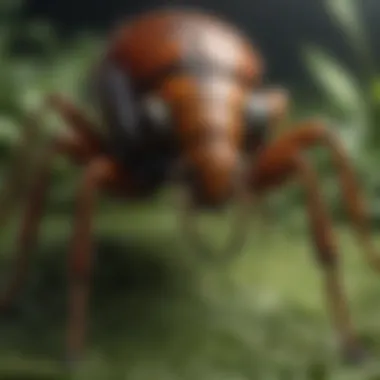
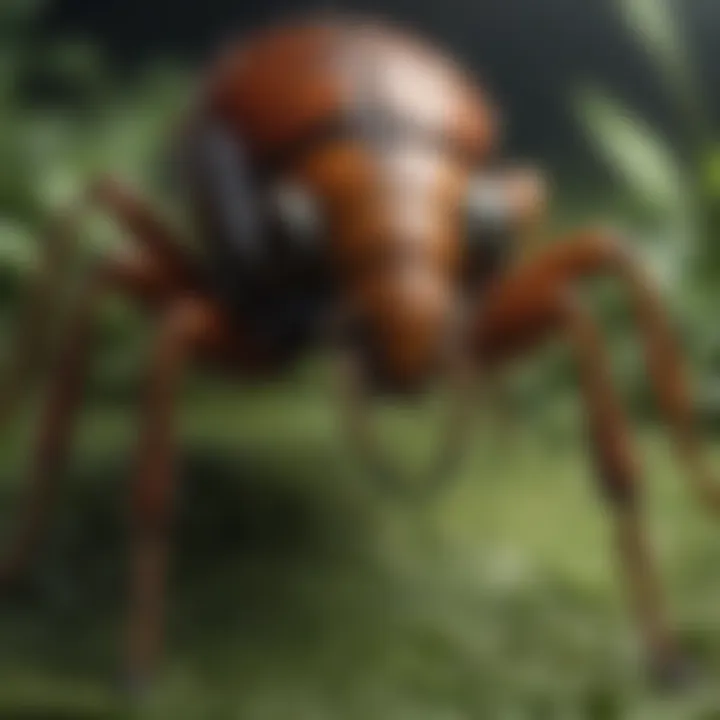
Additionally, insects like spiders, often considered frightening, provide essential pest control, keeping populations of other pests in check. It is crucial to understand that fear of insects often arises from a lack of knowledge. By educating individuals about beneficial insects, we can mitigate irrational fears.
The Ecological Roles of Most Insects
Insects serve vital functions in ecosystems. They contribute to nutrient cycling, which supports plant growth. Decomposers, such as certain beetles and ants, break down organic matter, recycling nutrients back into the soil. Moreover, insects are crucial pollinators. According to research, approximately 75% of flowering plants depend on insects for pollination. This includes many crops that are fundamental to our diets.
Furthermore, insects act as a food source for various animals. Birds, mammals, and even some reptiles depend heavily on insects for sustenance. Thus, insects are integral to the food web, maintaining the balance of our natural environments.
"The roles insects play are foundational in assuring the health and sustainability of ecosystems."
Lastly, insects also help control pest populations. Predatory insects like ladybugs manage aphid populations, reducing the need for chemical pesticides. By recognizing these ecological roles, society can appreciate insects not as mere nuisances but as vital players in our world.
Innovative Pest Control Strategies
Innovative pest control strategies hold significant relevance in today's homes and gardens. With growing concerns about the impact of chemical pesticides on health and the environment, more individuals are searching for effective alternatives. These methods not only aim to reduce pest populations but also emphasize the importance of sustainability and environmental conservation.
Biological Control Methods
Biological control methods involve the use of natural predators or parasites to manage pest populations. This approach is gaining traction as an eco-friendly alternative to traditional chemical methods. For example, ladybugs are commonly used to control aphid populations, while parasitic wasps can target caterpillars. This method is advantageous for several reasons:
- Low Environmental Impact: By utilizing natural predators, the need for synthetic pesticides decreases.
- Sustainable Solution: These methods often create a self-regulating system where natural enemies can maintain pest populations over time.
- Protection of Non-target Species: Biological methods tend to be more selective, protecting beneficial insects while controlling pests.
However, careful consideration is essential in selecting the appropriate biological agents. Not all predators are equally effective against every pest, and an imbalance can disrupt local ecosystems. Homeowners are encouraged to research their specific pest issues and consult local extension services or entomologists for guidance.
Eco-Friendly Pest Management
Eco-friendly pest management incorporates various practices to control pests while minimizing harm to human health and the environment. This strategy includes cultural, mechanical, and preventative approaches that employ sustainable practices. Here are some key elements of eco-friendly pest management:
- Cultural Practices: Adjusting agricultural methods can help deter pests. Crop rotation, for example, disrupts pest life cycles and reduces their populations.
- Mechanical Controls: Physical barriers, such as row covers or insect nets, can protect plants from pests without introducing harmful chemicals.
- Preventative Measures: Understanding pest life cycles and planting pest-resistant varieties is crucial. These practices can significantly reduce the need for intervention.
"Integrating innovative pest control strategies can lead to healthier ecosystems and homes, ultimately changing how we view pest management."
By adopting these accessible methods, homeowners can combat pests effectively while ensuring their gardening practices align with environmental sustainability. The rise of eco-friendly pest control is not merely a trend but a necessary evolution towards responsible stewardship of our natural resources.
The Future of Insectariums
The future of insectariums is a topic of significant importance in today’s world. With growing concerns about biodiversity and environmental health, these facilities can play an even more crucial role. They are not merely exhibitions of bugs; rather, they hold the potential to advance research, contribute to education, and enhance conservation efforts. Through innovative approaches and technological advancements, insectariums can adapt to challenges and become influential centers for public engagement.
As urbanization increases and habitats shrink, the role of insectariums in conservation can expand. Educational programs may encourage sustainable practices in communities, promoting a new generation that values nature and understands ecological dynamics. Simply put, the future of insectariums hinges on their ability to evolve and make an impact.
Technological Advancements
In recent years, technological advancements have transformed how insectariums operate. Digital displays and interactive exhibits allow for a deeper understanding of the species presented. Virtual reality experiences can immerse visitors in the habitats of insects. This engagement facilitates better retention of information and sparks interest in entomology.
Moreover, advances in research can provide insight into the health and behavior of insects in controlled environments. Genetic studies and bioinformatics contribute to the development of specialized breeding programs. Such innovations help in conserving endangered species and potentially reintroducing them into their natural habitats.
"The integration of technology in insectariums can enhance visitor experiences and make education more impactful."
Additionally, habitat monitoring systems can be used to maintain optimal conditions for the insects. Real-time data collection will help in understanding their needs and behaviors. These technological advancements do not just support the insects; they facilitate visitor engagement and learning.
Shifts in Public Perception
Shifts in public perception regarding insects are essential to the future success of insectariums. Traditionally, many viewed insects with fear or disgust. However, a growing awareness of their vital roles in ecosystems has begun to change perspectives. Programs aimed at highlighting the ecological benefits of insects help educate the public.
Insectariums can promote the idea that insects are not merely pests but are essential components of biodiversity. By demonstrating their roles as pollinators, decomposers, and part of food webs, these facilities can reshape narratives surrounding insects. People understand better that insects contribute positively to agriculture and natural environments, which may reduce stigma.
Moreover, as environmental issues become more pressing, public interest in sustainability can drive more visitors to insectariums. Their role as educational hubs can create a dialogue about conservation. People may start seeing these institutions as vital to understanding our planet.
This evolving perspective encourages more support for insectariums, fostering funding opportunities and partnerships aimed at conservation and education.


